Papers by Kate Rittenhouse-Olson
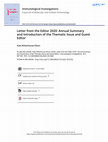
Immunological Investigations, Oct 2, 2020
This year's thematic is the seventeenth Immunological Investigations' thematic issue, and is enti... more This year's thematic is the seventeenth Immunological Investigations' thematic issue, and is entitled, "Micro and Nanoparticles in Immune Modulation". This topic was suggested by the editorial board last year. Applications using nano and microparticles occur in many medical fields and it is important to review how these particles affect the innate and the acquired immune system. The elegance of these systems intrigues both novice and experienced scientists, and attempts to modulate the immune system, either by up or downregulating it, can cause changes in many important aspects. Thus, in this issue, we focused on Micro and Nanoparticles in Immune Modulation. Like the effects and uses of nano and microparticles, this thematic is broad in scope. This thematic is a collection of articles on micro and nanoparticles that includes "Particulate matter, asian sand dust delays cyclophosphamide-induced type 1 diabetes in NOD mice" (Morita et al. 2019), "Bovine milk exosomes affect proliferation and protect macrophages against cisplatin-induced cytotoxicity" (Matic et al. 2020), "Exosomes represent an immune suppressive T cell checkpoint in human chronic inflammatory microenvironments" (Shenoy et al. 2020), "Immunosuppressive effect of "melanoma-derived exosomes on NY-ESO-1 antigen-specific human CD8 + T cells is dependent on IL-10 and independent of BRAF V600E mutation in melanoma cell lines" (Shu et al. 2020), Vaccine efficacy induced by 2009 pandemic H1N1 virus-like particles differs from that induced by split influenza virus" (Lee et al. 2019), "Metal nanoparticles in infection and immunity" (Crane 2020), "Microspheres encapsulating immunotherapy agents target the tumor-draining lymph node in pancreatic ductal adenocarcinoma" (Han et al. 2020), "Cytokine-encapsulated biodegradable microspheres for immune therapy" (Egilmez 2020), "Design and öptimization of PLGA particles to deliver immunomodulatory drugs for the prevention of skin allograft rejection" (Shahzad et al. 2019), "Biological function and immunotherapy utilizing phosphatidylserine-based nanoparticles" (Glassman et al. 2020) and "Mesenchymal stem cell-derived extracellular vesicles: a novel cell-free therapy" (Jafarinia et al. 2020). Several Immunological Investigation articles in the past 3 years have focused on the use on nanoparticles or microparticles in immunomodulation or as tools for immunologists, and these included "Poly lactic-co-glycolic acid nanoparticles containing human gastric tumor lysates as antigen delivery vehicles for dendritic cell-based antitumor immunotherapy" (Kohnepoushi et al. 2019), "Ïmmune correlates of protection induced by virus-like particles containing 2009 H1N1 pandemic influenza HA, NA or M1 proteins, immunological investigations" (Moon et al. 2019), "A "novel PspA protein vaccine intranasal delivered by bacterium-like particles provides broad protection against pneumococcal pneumonia in mice, immunological investigations" (Wang et al. 2018), and "Immunomodulatory activities of curcumin-stabilized silver nanoparticles: efficacy as an antiretroviral therapeutic" (Sharma et al. 2017).

Biomarkers, Sep 15, 2019
BackgroundDespite the in vitro and in vivo evidence, studies are limited in evaluating whether ch... more BackgroundDespite the in vitro and in vivo evidence, studies are limited in evaluating whether chemokines are potential inflammatory mediators in response to air pollution exposure in humans.MethodsWe conducted a panel study coinciding with the Beijing Olympics, when temporary air pollution controls were implemented. We measured a suite of serum chemokines among healthy adults before, during and after the Olympics, respectively. Linear mixed-effect models were used to evaluate changes in chemokine levels over the three time periods.ResultsIn response to the 50% drop in air pollution levels during the games, levels of RANTES, MCP-2, and TARC decreased by 25.8%, 20.9% and 35.3% respectively (P<0.001) from pre-Olympics, and then increased by 45.8%, 34.9% and 61.5% respectively (P<0.001) after the games when air pollution levels went up again. Similar patterns were observed in subgroup analyses by sex, age, smoking and body mass index. GRO-α and IL-8 decreased significantly during the games (22.5% and 30.4%), and increased non-significantly after the games. Eotaxin-1 only increased significantly from during- to post-games.ConclusionsThe strongest associations with air pollution levels were observed among RANTES, TARC and MCP-2. Those chemokines may play important roles in the air pollution induced inflammatory pathway.
Immunological Investigations, Aug 19, 2019

Vaccine, Jun 1, 2012
Advances in the use of carbohydrates as vaccine candidates for the prevention of infectious and m... more Advances in the use of carbohydrates as vaccine candidates for the prevention of infectious and malignant diseases was the topic for a meeting in Rockville, MD, sponsored by the National Institute of Allergy and Infectious Diseases involving a diverse group of scientists. Participants included research scientists and clinicians from academia and industry, and representatives from the National Institutes of Health and US Food and Drug Administration. This workshop was the third in a series of meetings designed to address issues relating to the immune response to carbohydrate antigens and how this information is used in the development of vaccines. Participants also identified roadblocks, research opportunities and resource needs. The meeting was organized into sessions that focused on recent advances in the immune response to microbial and cancer carbohydrate antigens, glycomics, novel vaccine approaches, novel adjuvants and delivery systems.

Blood, May 17, 2012
Noncovalent association between the von Willebrand factor (VWF) propeptide (VW-Fpp) and mature VW... more Noncovalent association between the von Willebrand factor (VWF) propeptide (VW-Fpp) and mature VWF aids N-terminal multimerization and protein compartmentalization in storage granules. This association is currently thought to dissipate after secretion into blood. In the present study, we examined this proposition by quantifying the affinity and kinetics of VWFpp binding to mature VWF using surface plasmon resonance and by developing novel anti-VWF DD3 mAbs. Our results show that the only binding site for VWFpp in mature VWF is in its DD3 domain. At pH 6.2 and 10mM Ca 2؉ , conditions mimicking intracellular compartments, VWFpp-VWF binding occurs with high affinity (K D ؍ 0.2nM, k off ؍ 8 ؋ 10 ؊5 s ؊1). Significant, albeit weaker, binding (K D ؍ 25nM, k off ؍ 4 ؋ 10 ؊3 s ؊1) occurs under physiologic conditions of pH 7.4 and 2.5mM Ca 2؉. This interaction was also observed in human plasma (K D ؍ 50nM). The addition of recombinant VWFpp in both flowchamber-based platelet adhesion assays and viscometer-based shear-induced plate-let aggregation and activation studies reduced platelet adhesion and activation partially. Anti-DD3 mAb DD3.1, which blocks VWFpp binding to VWF-DD3, also abrogated platelet adhesion, as shown by shearinduced platelet aggregation and activation studies. Our data demonstrate that VWFpp binding to mature VWF occurs in the circulation, which can regulate the hemostatic potential of VWF by reducing VWF binding to platelet GpIb␣. (Blood. 2012;119(20): 4769-4778)

Immunological Investigations, Jul 10, 2018
Dear Reader, It is my duty and pleasure to share with you the final timetable for the transition ... more Dear Reader, It is my duty and pleasure to share with you the final timetable for the transition of the editorial team of the International Journal of Gynecological Cancer. The current editorial team, led by myself and Ms Linda Haas Shapira for the past decade, will complete its duties with the last issue of the journal scheduled for publication in November. The following team, led by Dr Pedro Ramirez, will publish its first issue in January 2019. In so doing, the current editor will receive new submissions until June 30, 2018. All submissions from July 1, 2018, onward will be handled by the new team. It is our obligation to transfer a ''clean desk'' to our successors, and we will do our utmost to fulfill this goal. I take this opportunity to thank our dedicated senior editorsVboth past and presentVwho all made a genuine academic effort to bring our journal to its prominent place among medical publications. Looking forward to seeing you in Kyoto.

PubMed, Jun 1, 2005
Aim: To study the humoral immune response to tumor-associated carbohydrate epitopes (TF, Tn and a... more Aim: To study the humoral immune response to tumor-associated carbohydrate epitopes (TF, Tn and alphaGal) in patients with breast cancer and healthy donors, the putative impact of the chemotherapy and to evaluate if the level of antibody to these epitopes might be beneficial or detrimental for the patients with breast cancer. Materials and methods: The humoral immune response to TF, Tn and alphaGal was studied in 133 patients with breast cancer, including the patients at stage II-III (n = 44) before and after neoadjuvant chemotherapy (10 patients received cyclophosphamide/methotrexate/fluorouracyl (CMF) chemotherapy regimens, 34 patients received cyclophosphamide/doxorubicin/fluorouracil (CAF)), and in controls (healthy donors and patients with fibroadenoma). Fully synthetic carbohydrate hapten-polyacrylamide conjugates were used as antigens in ELISA for anti-carbohydrate antibody determination. The correlation analysis between the level of anti-carbohydrate antibodies and the stage of cancer, histological grade, expression of TF and alphaGal epitopes in tumor tissue, patient's survival was performed. Results: The level of anti-carbohydrate antibodies varied between individuals with no significant correlation between IgG immune response to the three epitopes. Lower levels of antibodies were observed at advanced stages of cancer. Neoadjuvant chemotherapy stimulated antibody production to Tn and alphaGal epitopes (increase > 50%) in about one third of patients. Immunosuppression, decrease in antibody levels, was observed only in 4.5-13.6% of cases. High levels of TF-antigen specific IgG antibody before surgery were associated with a better survival time of stage II breast cancer patients. Conclusion: The widely used regimens of neoadjuvant chemotherapy (such as CMF, CAF) can stimulate the immune response to tumor-associated carbohydrate epitopes in some patients. The high levels of anti-TF antibody before surgery are associated with a better survival of stage II breast cancer patients. This may indicate that the selection of immunopotentiating regimens of neoadjuvant chemotherapy might be beneficial for the host.
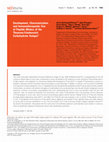
Neoplasia, Aug 1, 2009
The tumor-associated carbohydrate Thomsen-Friedenreich antigen (TF-Ag; Galβ1-3GalNAcα-O-Ser/Thr) ... more The tumor-associated carbohydrate Thomsen-Friedenreich antigen (TF-Ag; Galβ1-3GalNAcα-O-Ser/Thr) is overexpressed on the cell surface of several types of tumor cells, contributing to cancer cell adhesion and metastasis to sites containing TF-Ag-binding lectins. A highly specific immunoglobulin G 3 monoclonal antibody (Ab) developed to TF-Ag (JAA-F11) impedes TF-Ag binding to vascular endothelium, blocking a primary metastatic step and providing a survival advantage. In addition, in patients, even low levels of antibodies to TF-Ag seem to improve prognosis; thus, it is expected that vaccines generating antibodies toward TF-Ag would be clinically valuable. Unfortunately, vaccinations with protein conjugates of carbohydrate tumor-associated Ags have induced clinically inadequate immune responses. However, immunization using peptides that mimic carbohydrate Ags such as Lewis has resulted in both Ab and T-cell responses. Here, we tested the hypothesis that vaccinations with unique TF-Ag peptide mimics may generate immune responses to TF-Ag epitopes on tumor cells, useful for active immunotherapy against relevant cancers. Peptide mimics of TF-Ag were selected by phage display biopanning using JAA-F11 and rabbit anti-TF-Ag Ab and were analyzed in vitro to confirm TF-Ag peptide mimicry. In vitro, TF-Ag peptide mimics bound to TF-Ag-specific peanut agglutinin and blocked TF-Ag-mediated rolling and stable adhesion of cancer cells to vascular endothelium. In vivo, the immunization with TF-Ag-mimicking multiple antigenic peptides induced TF-Ag-reactive Ab production. We propose that this novel active immunotherapy approach could decrease tumor burden in cancer patients by specifically targeting TF-Ag-positive cancer cells and blocking metastasis.

PLOS ONE, Sep 20, 2018
Bone is a common site of metastasis for breast cancer and the mechanisms of metastasis are not fu... more Bone is a common site of metastasis for breast cancer and the mechanisms of metastasis are not fully elucidated. The purpose of our study was to characterize temporal and molecular dynamics of adhesive interactions between human breast cancer cells (HBCC) and human bone marrow endothelium (HBME) with piconewton resolution using atomic force microscopy (AFM). In adhesion experiments, a single breast cancer cell, MDA-MB-231 (MB231) or MDA-MB-435 (MB435) was attached to the AFM cantilever and brought into contact with a confluent HBME monolayer for different time periods (0.5 to 300 sec). The forces required to rupture individual molecular interactions and completely separate interacting cells were analyzed as measures of cell-cell adhesion. Adhesive interactions between HBME and either MB231 or MB435 cells increased progressively as cell-cell contact time was prolonged from 0.5 to 300 sec due to the time-dependent increase in the number and frequency of individual adhesive events, as well as to the involvement of stronger ligand-receptor interactions over time. Studies of the individual molecule involvement revealed that Thomsen-Friedenreich antigen (TF-Ag), galectin-3, integrin-β1, and integrin-α3 are all contributing to HBCC/HBME adhesion to various degrees in a temporally defined fashion. In conclusion, cell-cell contact time enhances adhesion of HBCC to HBME and the adhesion is mediated, in part, by TF-Ag, galectin-3, integrin-α3, and integrin-β1.
Applied Radiation and Isotopes, Mar 1, 2008
Clinical immunolocalization has been attempted by others with an anti-Thomsen-Friedenreich antige... more Clinical immunolocalization has been attempted by others with an anti-Thomsen-Friedenreich antigen (TF-Ag) mAb which bound both alpha-and beta-linked TF-Ag. In this report, 124 I labeled mAb JAA-F11 specific for alpha-linked TF-Ag showed higher tumor specificity in in vivo micro positron emission tomography (microPET) of the mouse mammary adenocarcinoma line, 4T1, showing no preferential uptake by the kidney. Labeled product remained localized in the tumor for at least 20 days. Glycan array analysis showed structural specificity of the antibody.

Chemical Communications, 2001
Breast cancer marker T-antigen (Gal(b1-3)aGalNAc) was prepared as an allyl glycoside that was tra... more Breast cancer marker T-antigen (Gal(b1-3)aGalNAc) was prepared as an allyl glycoside that was transformed into an active ester and coupled to a series of poly(amidoamine) dendrimers showing strong binding to mouse monoclonal IgG antibodies and serving as useful coating antigens in microtiter plates. Scheme 1 (a) allyl alcohol, BF 3 OEt 2 , reflux for 3 h, 65 %; (b) BzCl (2.2 eq.), Py-CHCl 3 , 260 °C, 92%; (c) (i)Tf 2 O (1.5 equiv), Py (3.3 eq.)/CH 2 Cl 2 , 215 °C, (ii) NaNO 2 (10 eq.), DMF, 25 °C, 85% (2 steps); (d) MeONa, MeOH, quantitative; (e) PhCHO, ZnCl 2 (2 eq.) or PhCH(OMe) 2 (5 eq.), 25°C , 87%; (f) Gal-Br (4 (Bz) or 5 (Ac)) (1.5 eq), Hg(CN) 2 (1.5 eq) , PhH-MeNO 2 , 25 °C 78-98 %; (g) i) MeONa, MeOH, (ii) 60% aq. AcOH, 60°C, 93%; (h) HSCH 2 CH 2 CO 2 H (1.1 eq), UV (254 nm), 83%. BzCl = benzoyl chloride, Py = pyridine, Tf 2 O = trifluoromethanesulfonic anhydride, AcOH = acetic acid.

Toxicology in Vitro, Feb 1, 2007
Many drugs and endogenous substances undergo biotransformation by cytochrome P450s (CYPs), and so... more Many drugs and endogenous substances undergo biotransformation by cytochrome P450s (CYPs), and some drugs are also capable of modulating the expression of various CYPs. Knowledge of the potential of a drug to modulate CYPs is useful to help predict potential drug interactions. This study utilized precision-cut rat liver slices in dynamic organ culture to assess the eVects of various media on the viability of rat liver slices and the expression of CYP2B and CYP2E1 when the slices are exposed to phenobarbital and isoniazid, which are drugs capable of inducing these respective CYPs. Liver slices were maintained in serum supplemented Waymouths medium and two diVerent serum-free media, Hepatozyme (Life Technologies) and a new deWned medium, which is named BPM. While Hepatozyme is considered a suitable medium to support primary hepatocyte cultures, this product did not maintain viable liver slices, even for 24 h. The serum containing and new deWned media maintained viable liver slices for up to 96 h in culture. Phenobarbital (0.5 mM) and isoniazid (0.1 or 0.6 mM) did not aVect viability in this model. In the absence of phenobarbital or isoniazid, liver slices maintained for 96 h in the new BPM medium maintained the respective levels of CYP2B and 2E1 protein at 1.8 and 1.9-fold higher than in slices maintained in the serum-containing medium. Phenobarbital exposure (0.5 mM) for 96 h induced CYP2B protein 5.2-fold in the BPM medium and 2.5-fold in the serum-containing medium. Isoniazid exposure (0.1 and 0.5 mM) for 96 h induced CYP2E1 protein 1.9 and 2.1-fold (respectively) in the BPM medium and 2.1 and 2.0-fold in the serum-containing medium. The respective CYP enzymatic activities were also increased by these drugs in a similar manner. Thus, the new deWned BPM medium provides suitable conditions for maintaining CYP2B and 2E1 in liver slices and supports the investigation of drug-induced modulation of these enzymes.
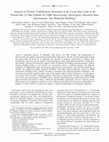
Biochemistry, Jul 1, 2002
Structural analysis of minimally sized lectins will offer insights into fundamentals of intermole... more Structural analysis of minimally sized lectins will offer insights into fundamentals of intermolecular recognition and potential for biomedical applications. We thus moved significantly beyond the natural limit of lectin size to determine the structure of synthetic mini-lectins in solution, their carbohydrate selectivity and the impact of ligand binding on their conformational behavior. Using three disaccharide (Thomsen-Friedenreich antigen; Gal 1,3GalNAcR1,R)-binding pentadecapeptides without internal disulfide bridges as role models, we successfully tested a combined strategy with different techniques of NMR spectroscopy, electrospray ionization mass spectrometry, and molecular modeling. In solution, the peptides invariably displayed flexibility with rather limited restrictions, shown by NMR experiments including nearly complete resonance assignments and molecular dynamics simulations. The occurrence of aromatic/nonpolar amino acids in the sequence did not lead to formation of a hydrophobic core known from microbial chitinase modules. Selectivity of disaccharide binding was independently observed by mass spectrometry and NMR analysis. Specific ligand interaction yielded characteristic NMR signal alterations but failed to reduce conformational flexibility significantly. We have thereby proven effectiveness of our approach to analyze even low-affinity interactions (not restricted to carbohydrates as ligands). It will be useful to evaluate the impact of rational manipulation of lead peptide sequences. † The work benefited from financial support from the EC program Training and Mobility in Research (ERBFMGECT-950032) and the EC program for high-level scientific conferences and the Wilhelm-Sander-Stiftung (Munich, Germany).

Oncotarget, Oct 20, 2017
The tumor-associated Thomsen-Friedenreich glycoantigen (TF-Ag) plays an important role in hematog... more The tumor-associated Thomsen-Friedenreich glycoantigen (TF-Ag) plays an important role in hematogenous metastasis of multiple cancers. The LTQ Orbitrap LC-MS/MS mass spectrometry analysis of cell surface TF-Ag proteome of metastatic prostate cancer cells reveals that several cell surface glycoproteins expressing this carbohydrate antigen in prostate cancer (CD44, α2 integrin, β1 integrin, CD49f, CD133, CD59, EphA2, CD138, transferrin receptor, profilin) are either known as stem cell markers or control important cancer stem-like cell functions. This outcome points to a potential link between TF-Ag expression and prostate cancer stem-like phenotype. Indeed, selecting prostate cancer cells for TF-Ag expression resulted in the enrichment of cells with stem-like properties such as enhanced clonogenic survival and growth, prostasphere formation under non-differentiating and differentiating conditions, and elevated expression of stem cell markers such as CD44 and CD133. Further, the analysis of the recent literature demonstrates that TF-Ag is a common denominator for multiple prostate cancer stem-like cell populations identified to date and otherwise characterized by distinct molecular signatures. The current paradigm suggests that dissemination of tumor cells with stem-like properties to bone marrow that occurred before surgery and/or radiation therapy is largely responsible for disease recurrence years after radical treatment causing a massive clinical problem in prostate cancer. Thus, developing means for destroying disseminated prostate cancer stem-like cells is an important goal of modern cancer research. The results presented in this study suggest that multiple subpopulation of putative prostate cancer stem-like cells characterized by distinct molecular signatures can be attacked using a single target commonly expressed on these cells, the TF-Ag.

Immunological Investigations, 2002
An adherence method was developed that enriches for antigen presenting cells (dendritic cells, mo... more An adherence method was developed that enriches for antigen presenting cells (dendritic cells, monocytes/macrophages, and B lymphocytes) from peripheral blood mononuclear cell (PBMC) preparations. This method utilizes the cells&amp;amp;amp;amp;amp;amp;amp;amp;amp;amp;amp;amp;amp;amp;amp;amp;amp;amp;amp;amp;amp;amp;amp;amp;amp;amp;amp;amp;amp;amp;#39; natural adherence to polystyrene tissue culture dishes and their subsequent removal with K3EDTA after incubation at 4 degrees, with gentle pipeting. Flow cytometric analysis revealed that on average, the enrichment of CD83+ dendritic cells, CD14+ monocytes/ macrophages, and CD19+ B cells increased by 12.5 to 20, 2, and 4 fold, respectively, compared to their initial numbers present in PBMC preparations. Cell viability, determined by trypan blue exclusion, was between 90 and 98%. After the enrichment procedure, the cells could still be activated by tetanus toxoid and this was shown by flow cytometric analysis, as enhancement of class II major histocompatibility complex (MHC) (31% increase) (after antigen treatment). This is a fast and economical alternative to other established methods for the preparation of pure, functionally competent antigen presenting cells derived from peripheral blood.
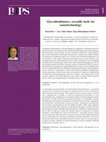
Brazilian Journal of Pharmaceutical Sciences, 2013
René Roy was born in Québec (Canada). He holds a Canadian Research Chair in Therapeutic Chemistry... more René Roy was born in Québec (Canada). He holds a Canadian Research Chair in Therapeutic Chemistry in the Department of Chemistry of the Université du Québec à Montréal (Qc, Canada) since 2004. After is Ph. D., obtained in 1980 from the Université de Montréal in carbohydrate chemistry under Pr. Stephen Hanessian, he joined the National Research Council of Canada in Ottawa (Canada) from 1980-1985. He was then professor in the Department of Chemistry at the University of Ottawa from 1985-2002. He has been the recipient of the 2003 Melville L. Wolfrom Award from the ACS Division of Carbohydrate Chemistry for his contributions in the design of vaccines and glycodendrimers. He has published over 300 publications and has contributed to the development of two commercial carbohydrate-based vaccines. His actual interests are in multivalent carbohydrate protein interactions and in nanomedicines.

Journal of the American Chemical Society, Feb 13, 2001
Novel glycodendrimers based on N,N'-bis(acrylamido)acetic acid core with valencies between two an... more Novel glycodendrimers based on N,N'-bis(acrylamido)acetic acid core with valencies between two and six were synthesized. The breast cancer-associated T-antigen carbohydrate marker, (-Gal-(1-3)-R-GalNAc-OR), was then conjugated by (i) 1,4-conjugate addition of thiolated T-antigen to the N-acrylamido dendritic cores and by (ii) amide bond formation between an acid derivative of the T-antigen and the polyamino dendrimers. The protein-binding ability of these new glycodendrimers was fully demonstrated by turbidimetric analysis and by enzyme-linked immunosorbent assay (ELISA) using peanut lectin from Arachis hypogaea and a mouse monoclonal antibody (MAb) FAA-J11 (IgG3). When tested as inhibitors of binding between MAb and a polymeric form of the T-antigen (T-antigen-co-polyacrylamide) used as a coating antigen, di-(17), tetra-(20), hexa-(21), and tetravalent (22) dendrimers showed IC 50 values of 174, 19, 48, and 18 nM, respectively. Two tetramers showed 120-to ∼128-fold increased inhibitory properties over the monovalent antigen 6 used as a standard (IC 50 2.3 mM). Heterobifunctional glycodendrimer bearing a biotin probe was also prepared for cancer cell labeling.
Oncotarget, Mar 15, 2014
This is an open-access article distributed under the terms of the Creative Commons Attribution Li... more This is an open-access article distributed under the terms of the Creative Commons Attribution License, which permits unrestricted use, distribution, and reproduction in any medium, provided the original author and source are credited.

PLOS ONE, Jan 24, 2013
Recombinant antibodies are of profound clinical significance; yet, anti-carbohydrate antibodies a... more Recombinant antibodies are of profound clinical significance; yet, anti-carbohydrate antibodies are prone to undesirable cross-reactivity with structurally related-glycans. Here we introduce a new technology called Computational Carbohydrate Grafting (CCG), which enables a virtual library of glycans to be assessed for protein binding specificity, and employ it to define the scope and structural origin of the binding specificity of antibody JAA-F11 for glycans containing the Thomsen-Friedenreich (TF) human tumor antigen. A virtual library of the entire human glycome (GLibrary-3D) was constructed, from which 1,182 TF-containing human glycans were identified and assessed for their ability to fit into the antibody combining site. The glycans were categorized into putative binders, or non-binders, on the basis of steric clashes with the antibody surface. The analysis employed a structure of the immune complex, generated by docking the TF-disaccharide (Galb1-3GalNAca) into a crystal structure of the JAA-F11 antigen binding fragment, which was shown to be consistent with saturation transfer difference (STD) NMR data. The specificities predicted by CCG were fully consistent with data from experimental glycan array screening, and confirmed that the antibody is selective for the TF-antigen and certain extended core-2 type mucins. Additionally, the CCG analysis identified a limited number of related putative binding motifs, and provided a structural basis for interpreting the specificity. CCG can be utilized to facilitate clinical applications through the determination of the three-dimensional interaction of glycans with proteins, thus augmenting drug and vaccine development techniques that seek to optimize the specificity and affinity of neutralizing proteins, which target glycans associated with diseases including cancer and HIV.




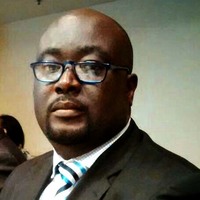

Uploads
Papers by Kate Rittenhouse-Olson